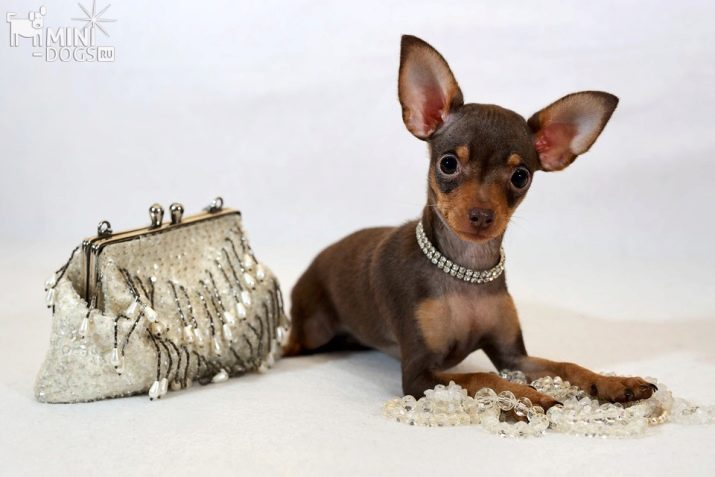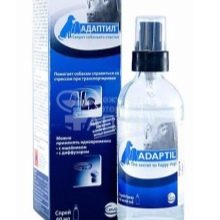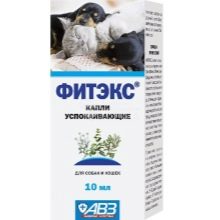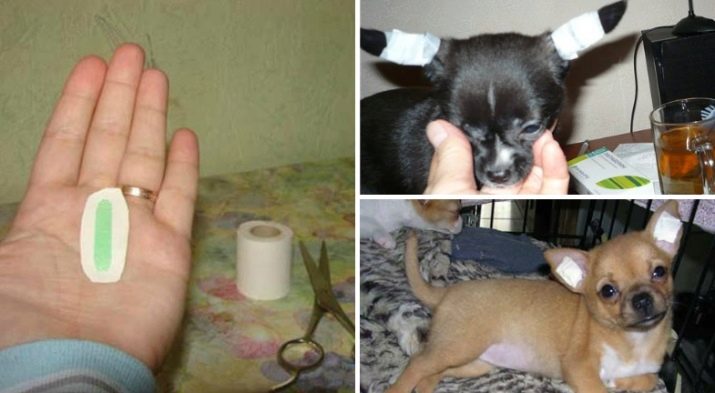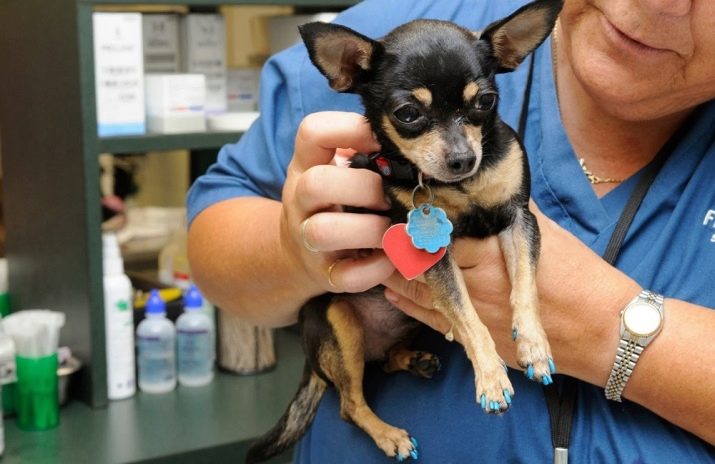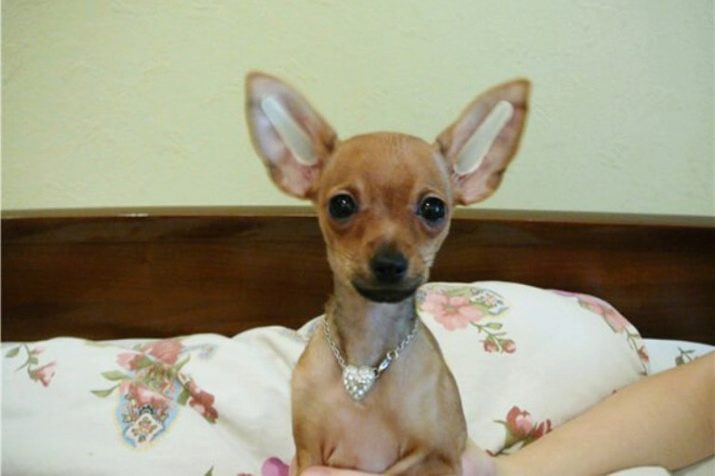Small and pretty toy terriers are cheerful and unassuming dogs that have obvious mental abilities and a dedicated character. Their peculiarity consists in hanging ears from birth, which should grow stronger and stand up with time, which fully complies with the breed standard. Owners of these cute animals will need to explore the problems that are associated with this issue.
When get up?
According to the standards, the ears of a toy terrier should be thin, rather large, with a high seating position. When an animal is born, the cartilage of the auditory organ is too weak, but as the dog grows, they become stronger and soon assume a standing position. This is a natural process that can be accelerated, and with its unsatisfactory flow - stimulated. For this reason, the pet owner, whose life involves participation in exhibition shows, will need to familiarize himself with all the necessary procedures.
Some eases relate to the Russian toy terrier breed, which is distinguished by its long hairline - its ears can stand by half. This assumption is due to the fact that heavy wool makes the auditory organ more heavy. But in the case of smooth-haired individuals, the judges are extremely strict, and incorrectly set ears can cause disqualification even with the other preferential characteristics of the animal.
The peculiarity of strengthening and formation of ears in Toi is the uncertainty of the age at which point it occurs. But the factors described below can influence the formation.
- Often, the slow development of cartilage tissues depends on the state of health of the parent of the puppy, which was malnourished during pregnancy. Perhaps the mother had other pathologies, so the formation of the cub's ears is slow. This means that the owner should take care of the puppy, and, first of all, while he feeds on breast milk from the mother, the diet should be properly prepared.
- The reason that the ears do not stand up for a long time is the wrong selection of the father and mother. If you need offspring with high-quality ears, you should not cross short-haired representatives with terriers with long, shaggy hair. If this has already happened, we can expect a notorious problem.
- The human factor also plays an important role in the formation of a proper rack of the ears of the animal - the process should be adjusted at the age of 2 months. Timely intervention gives you the opportunity not to worry about a positive result. A small puppy takes the necessary procedure easier than an older animal. But if the safety net is not carried out on time or is completely missed, it is difficult to predict how the development of the body will proceed.
Other causes of weak cartilage besides unwanted genetics, which is not the case with a clean pedigree, determined by the presence of both short-haired parents - lack of nutrients, vitamins, especially calcium and the stress state of the baby, which depletes his immune system and energy reserves of the body.
According to canine specialists, cartilage development occurs in dogs during the first 6 months of life., and by this time the puppies' ears should already be standing. In practice, this happens in 4-5 months, and in some toev even earlier. But it also happens that hanging ears remain up to 1 year for one of the above reasons.
Do I need to stop?
Unlike other breeds, toy-terrier ears are not arrested, because these are the requirements for the appearance of the dog. Let this not surprise inexperienced dog breeders - it is believed that the exterior of the animal with its long legs is balanced and looks more proportional due to the large ears sticking up.
But if a puppy has an inflammatory process, accompanied by suppuration, or necrosis of ear tissues, arresting is justified, since it prevents dangerous complications. But this is perhaps the only benefit of such an operation.
If in such a situation is an asset relief, her unconditional cons can be described by the following positions:
- distortion of the noble image and facial expression of the animal, so that it looks aggressive, which makes it impossible to communicate with other dogs;
- post-traumatic stress disorder, that is, a significant mental disorder of the pet, the rehabilitation of which can take a long period;
- physical recovery (healing) capable of causing that suffering;
- disqualification and closed entrance to the exhibition.
Many dog breeders are against cupping their ears. In Europe and many other countries, such an act is prohibited by law, and the owner must be prepared to be punished for the cruel treatment of his animal. Most dog trainers, really loving dogs, with this approach completely agree.
How to put?
You can put a pet's ears not only with the help of a special corrective procedure - you can start by finding out if the puppy is not under stress. To do this, you can watch the animals. Owners with experience maintaining a breed list these reasons:
- great exercise associated with workouts;
- repair or move to a new home;
- visit to the veterinary clinic;
- appearance in the family of another animal or newborn.
If such moments cannot be excluded from life, you should resort to sedatives that can calm the dog (“Stop-stress”, “Adaptil”, “Fospasim”, “Fitex”).
Proper will pay attention to diet food. It's one thing if the finished feed with a balanced composition used in the recommended dosage, for example, Purina Pro Plan, Nutra Nuggets, Nutra Gold, Belcando or Advance. But when an animal eats natural food, it may lack some minerals and vitamins, which means that they should be introduced into the diet.
And finally, at home, you can make the necessary correction of the ears, allowing them to stand confidently after a while. Ear sticking can be done independently. It is a safe procedure, when the ears can not stand or sit up and then fell again.
To perform this work you will need the following tools:
- antiseptic;
- scissors;
- small pieces of plastic as a frame;
- to fix - a hypoallergenic adhesive tape to prevent problems with skin toy.
Then take the following actions:
- 2 cut piece of a patch size slightly smaller than the inner ear of the animal;
- prepare plastic tires and glue them with plaster from both sides;
- process the animal's ears with a disinfectant and dry it.
Gluing is done using two strips of plaster, the optimal width of the pieces is 7-10 cm. It is important to start “pasting” from the inside of the ear shell, from its corner, and then continue sizing around its circumference. It is necessary to act rather quickly so that the animal does not experience discomfort. We can not allow rubbing plaster skin of the ear - this can provoke irritation. It is also necessary to leave the auditory canal open.
Keep the frame on the ears is allowed no more than 2 weeks, but the vet may recommend extending the course to 30 days.
Correction is needed to strengthen the cartilage, but it should not cause discomfort to the dog.
To avoid unpleasant complications, you need:
- avoid animal experiences;
- To improve the condition of cartilage and the growth of their tissues, enter dishes with gelatin into the menu - this can be food based on broth or milk.
To stimulate the growth and raising of the ears, you can apply a massage in order to improve the blood supply to the organ, but it should be carried out delicately and at intervals of time.
To activate the processes of strengthening cartilage, it is allowed to use agents containing sulfates of glucosamine and chondroitin, which increase growth and improve the quality of cartilage. Special preparations with different chondroprotective effects include “Hekalan”, as well as “Phytochondrovit”, “Artrofit” and “Kinosil”.
Sometimes radical intervention is needed. An extreme measure is ear plastic, in which the doctor does a skin tightening, and the ear stands without help.
It is clear when breeders order such an operation, trying to hide the pedigree errors from the buyer of the puppy. In the event that the matter concerns the prestige of the dog, the owner will have to fully accept the consequences, including the lethal ones, on his conscience. The operation takes place with the use of general anesthesia, and if the animal has a weak heart, liver or kidneys, it can die.
How to clean?
If the terrier constantly scratches his ears, and this is due to their adjustment, but at the same time the puppy is full of energy and positive, then the reason for this phenomenon should be sought in the long absence of the owner. Worry is, if the baby has painful symptoms. It is wiser to immediately consult a doctor in order to avoid annoying symptoms and slow down the process of strengthening the young cartilage of the auditory organ. Any pathology can be prevented with the occasional care of the animal's ears.
How to carry out the procedure:
- using olive, boiled oil or a special product, a clean, soft cloth or cloth, cotton wool disks;
- when cleaning the animal's head is fixed by hand;
- first, the area inside the ear is cleaned with cooled boiling water and a cotton pad;
- after that, to soften and dissolve oil is buried and left for 20-30 seconds;
- then you need to insert a clean tampon in your ear and wait until the product is absorbed along with the impurities;
- At the end, you need to dry your pet's ears.
When taking care of animals, do not use cotton swabs - puppies are too mobile and impulsive, and sudden movements can seriously damage the ear area.
One cannot allow the formation of such a part of the body of a toy terrier as ears, and the attentive owner perfectly understands the relevance of constantly monitoring the state of the animal. This is necessary for the proper type of dog, but not only, because the health of an animal and a devoted friend is no less valuable to humans.
For more information on how to care for a toy terrier, see the next video.








